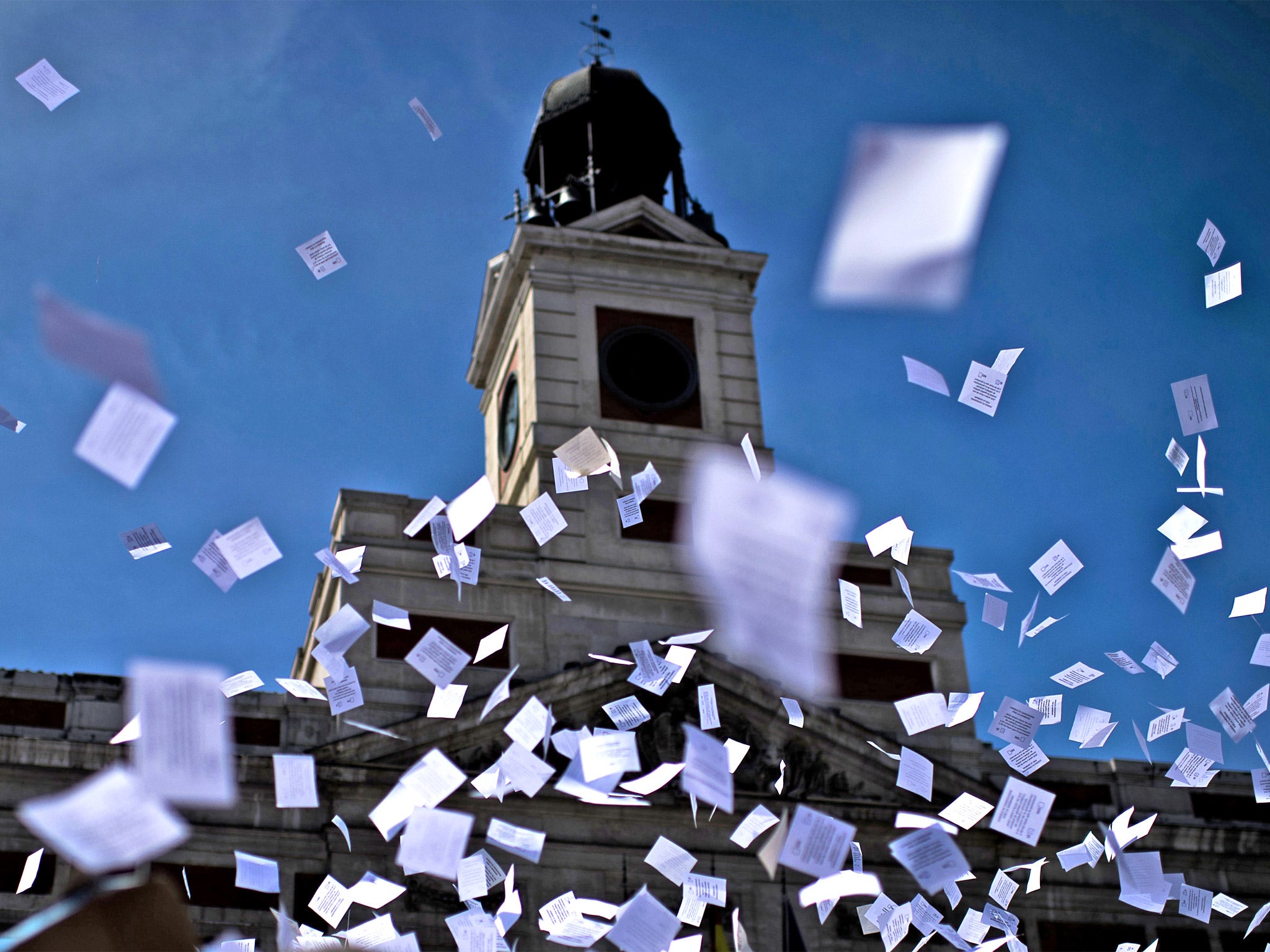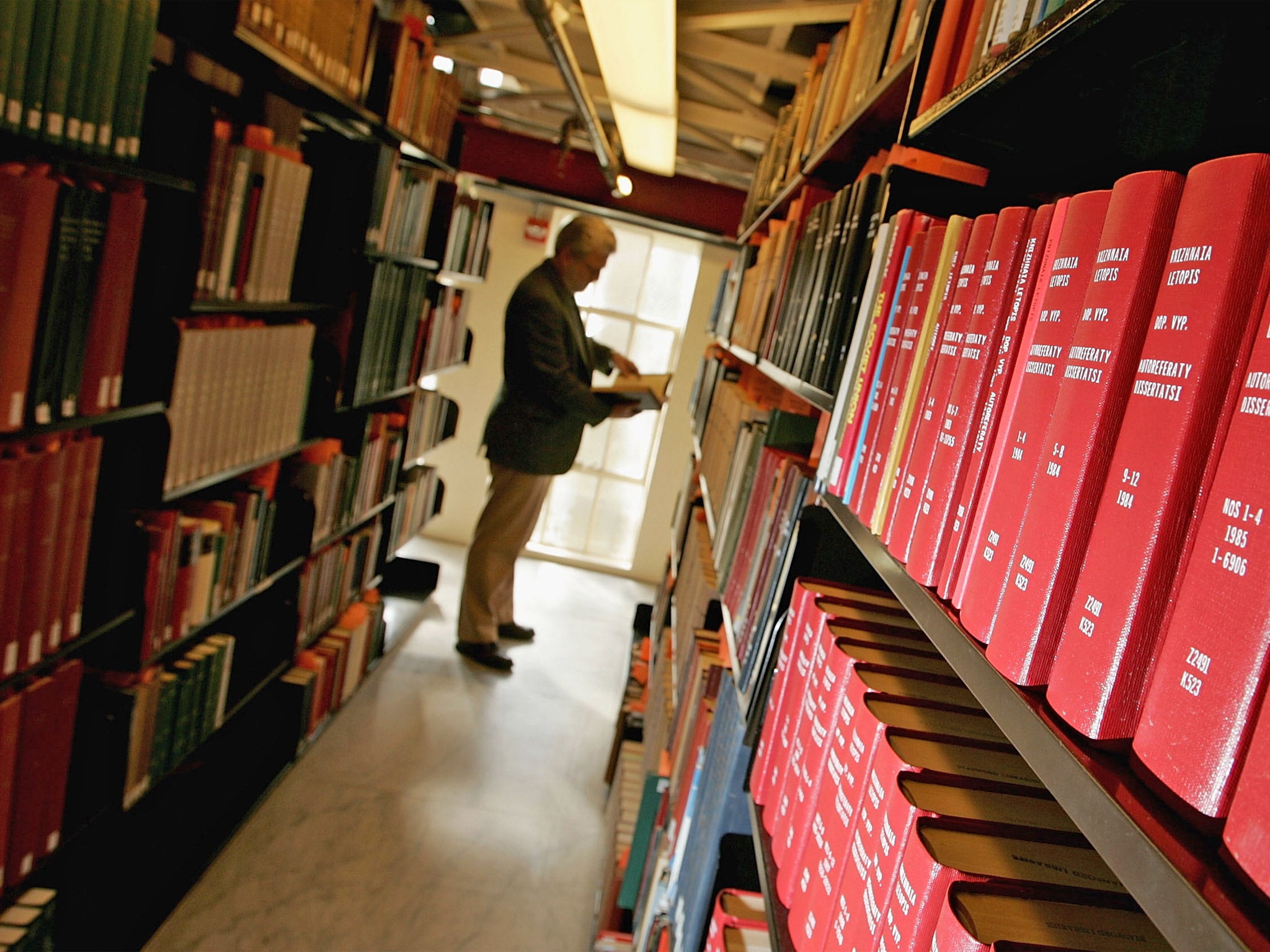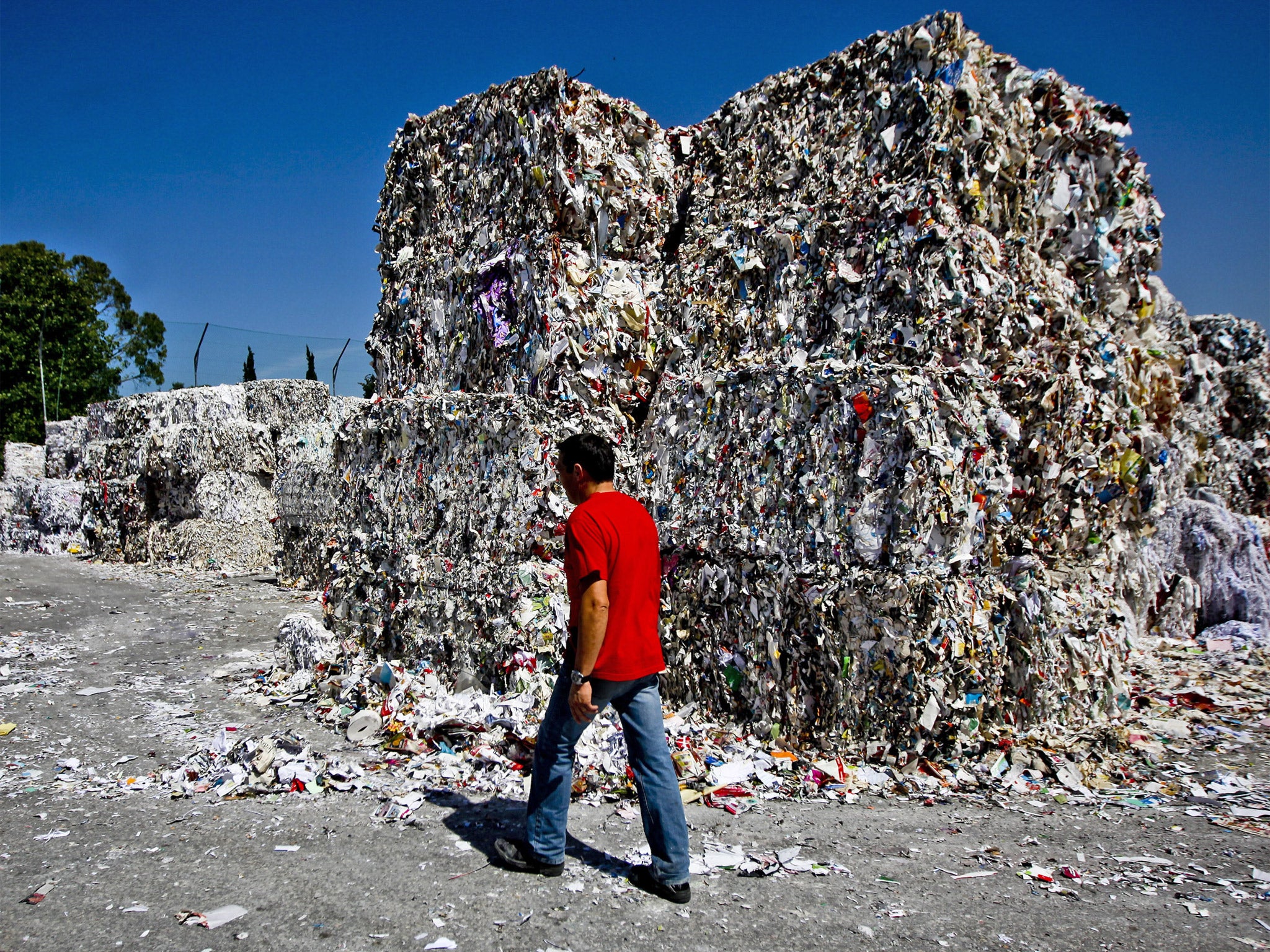The power of paper
The digital revolution is leading to a paperless world. Well, that's the received wisdom. In fact, says Alexander Monro, after 2,000 years, paper's power is merely evolving

Your support helps us to tell the story
From reproductive rights to climate change to Big Tech, The Independent is on the ground when the story is developing. Whether it's investigating the financials of Elon Musk's pro-Trump PAC or producing our latest documentary, 'The A Word', which shines a light on the American women fighting for reproductive rights, we know how important it is to parse out the facts from the messaging.
At such a critical moment in US history, we need reporters on the ground. Your donation allows us to keep sending journalists to speak to both sides of the story.
The Independent is trusted by Americans across the entire political spectrum. And unlike many other quality news outlets, we choose not to lock Americans out of our reporting and analysis with paywalls. We believe quality journalism should be available to everyone, paid for by those who can afford it.
Your support makes all the difference.If you are not reading this on a screen, then you hold in your hands one of humanity's most world-changing inventions. Yet that power has not been matched by fame; paper delights in self-effacement, pointing you to the words on its surface, and so acting only as a stage for ideas and arguments that have changed history.
Without that stage, the written and printed word would have attracted only niche audiences. All the alternatives to paper commonly used throughout our pre-digital history have been too rare, too cumbersome, too expensive or too inconvenient to deliver words to a wide number of people, let alone a mass readership. Not one of them has been able to rival paper over the long term, whether stone, wood, bamboo, talipat leaves, papyrus, parchment or vellum.
Today, there are more paper trails than anyone could count. Every time you read a book, newspaper, account statement or Post-It note, you are simply the latest destination in a 2,000-year-old journey that began in China and ends, for the moment, in a billion pairs of hands.
Paper has enabled writers to reach unprecedented numbers throughout history. Among them were the Buddhist missionary translators from South and Central Asia who brought their religion to China almost two millennia ago, into an empire whose writings typically appeared on bamboo, silk and wood. What made them – and their ideas – remarkable was that they were able to use the paper page to reach not just princes and scholars, but merchants and sometimes even the poor.

Among them, too, were the bureaucrats of the Abbasid Caliphate, which stretched from Central Asia to the Maghrib, the theologians who used the Koran to help forge an imperial identity, and the scientists and artists which the Caliphate spawned after the city of Baghdad was appointed its capital in the 760s AD. Among them, too, were the diplomats of the states of the Italian peninsula who, following the formation of the Italic League in 1454, began to keep extensive ambassadorial records.
Among them were Desiderius Erasmus, Martin Luther and the many scholars who delivered the Renaissance and Reformation from their desks, taking advantage of cheap Italian paper in their quest to recover, reproduce and translate the great texts of Hebrew, Greek and Roman antiquity. Among them, too, were the Dutch printers of the 18th century, who provided such a useful outlet for revolutionary authors wishing to distribute their ideas in pre-revolutionary France.
The paper age has its transcendent personalities: Lev Nikolayevich Tolstoy and Johann Wolfgang von Goethe, whose collected works (when combined) fill more than 200 volumes. It also has its political dynamos: Vladimir Ilyich Lenin, sitting in his study on Clerkenwell Green in London as he edits Iskra (Spark), the newspaper of the Russian Social Democratic Party, before it is smuggled into Russia to help foment communist revolution. Or Mao Zedong, whose Little Red Book is among the four or five most printed books in history.
For many of us, it has only been the rise of digital media that has finally opened our eyes to paper's remarkable ubiquity. Of course, paper has found thousands of roles for itself, writing aside. It remains the warp and woof of everyday life, as a brisk walk through the average day can prove. Your bedside lamp glows through a paper cover. The painting in your hallway is printed on paper and set behind a paper mount. There is a roll of paper beside the loo in your bathroom and a paper label on your bottle of shampoo. In the kitchen, your cereal and juice cartons are made of paper and you read paper post, paid for with paper stamps. Your wallet carries paper money. The billboards you pass on your walk to work carry paper adverts and there are children flying paper kites in the park.

The cups in the office coffee machine are made from paper and your work invariably involves at least a little paper-pushing. At lunchtime, you buy a newspaper and a sandwich wrapped in paper. Then you buy a present and have it gift-wrapped in paper. In the evening, a teenager is handing out paper flyers stacked in a cardboard box (also paper) and the lanterns and menus at the restaurant you choose are all made from paper. After the meal, your friend offers you a cigarette. Its casing is also paper. It can be eaten as rice paper or folded up as an aeroplane sick bag. Paper can cover a spot and it can cut a finger. It can form a weight that all too often sends your baggage over the airline's limit, or it can be caught by a soft breeze and, in a few moments, lifted hundreds of feet in the air. Children have made hand-held aeroplanes out of it to fly across their classrooms and demonstrators have burnt effigies printed out on it. It can last for hundreds of years but it can also disappear with moisture in minutes or be eaten by bookworms in a few days. It can be as mundane and practical as a bus ticket or it can be prized and expensive as the interface of the world's best-loved painting.
It is clear that the many prophesies of paper's demise have been premature – and greatly exaggerated. Much of the 400 million tonnes of paper produced annually is indispensable to our way of life. The bigger question, of course, concerns the one role paper has had that has been transformative for the world, namely as the porter of written or printed text. Already, it is leaving much of the heavy lifting of words to digital media, and many of its centuries-old roles have already been largely transferred to the screen, from encyclopaedias to correspondence. There is also a sense in which paper has itself become a subject, rather than simply a medium. This began to become clear in art several decades ago, as paper became not simply the backdrop for art but, in a few cases, the stuff of the art itself. Henri Matisse's cut-outs make this shift all the more tangible – when the medium itself becomes the art, it is often a sign that the medium is beginning to lose its historic role.
This doesn't mean that paper's uses as a vehicle for words will end, but it does signal a slowing down. More than that, it signals that paper's greatest virtues – ubiquity of ingredients, ease of manufacture, convenience for users – are no longer good enough. Those virtues enabled unprecedented periods of cultural expansiveness, just as they encouraged knowledge, beliefs and ideas to trickle further down the socio-economic ladder. It is a remarkable story and one that no other physical surface could have delivered. Yet such transformative qualities are shared by paper's digital rival, and paper can no longer compete on speed of delivery, scale of information immediately available, or (for those who can afford a computer and internet connection) ease of access.
If aesthetics do secure paper's future as a surface for words, then they also change its role: no longer an Everyman to communicate to the world, but more a lord, kept for elegantly illustrated novels, coffee-table books and expensive invitations. This is not the paper of history, a surface that delivered a new kind of power to billions of readers around the world. Paper's crucial role in the history of information has not been to beautify any more than it has been to rarify. Its power, instead, has resided in its universality. By making religion, politics and ideas accessible to a larger portion of the population than ever before, paper's greatest movements have displaced received wisdom, challenged structural inequalities and questioned institutional authority.
Where Confucianism restricted participation in texts to the elite, Buddhism in China encouraged wider social participation in religion through the production of writings that were both lower in cost and more colloquial in content. Where parchment and papyrus made reading expensive in the Middle East, the widespread adoption of paper by the Abbasid Caliphate made knowledge more widely available across the empire – hundreds of bookshops and dozens of libraries were the result, but so too was a culture of inquiry whose findings fed into Europe's own Renaissance. Monastic copying on to vellum and parchment enabled a Latin-dominated textual culture available only to the very few. But 16th-century vernacular Bible translations (printed out on to paper) began to deliver religion into the hands of Western Europe's laity as never before.

Paper's historic dynamism has received its first great challenge and, on many counts, it appears to be losing. Nostalgia simply relegates paper to a museum piece. But there are reasons to think that the dynamism that paper has exhibited over some 20 centuries will not be transferred wholesale to digitalia. There are a few practical reasons. Electrical power is always needed for digital media, of course. More importantly, anything online can, potentially, be hacked into. Your own reading choices can be viewed from the other side of the world or, worse, by your own government.
Even what you write can be viewed and altered or deleted. This is what Luke Harding discovered when writing a book on Edward Snowden and the NSA – the text of his book began to delete before his eyes. But it is the ownership of knowledge that matters most. As Amazon recently reminded a Kindle reader who had lost the text of a book he was reading, you do not "own" your books on Kindle, as you own a physical book. You simply have the right to access them.
What newspapers and novels have achieved through the modern copyright era is a physical delivery into the proprietorial hands of billions of readers. That ownership has had profound political consequences, too. The digital revolution certainly provides unprecedented access to knowledge. But it is access only, implying deference to the intermediary. Text that you can hold, shelve and own, courtesy of paper, will always have a magic all its own.
'The Paper Trail: An Unexpected History of the World's Great Invention' by Alexander Monro (Allen Lane, £20) is out now
Join our commenting forum
Join thought-provoking conversations, follow other Independent readers and see their replies
Comments